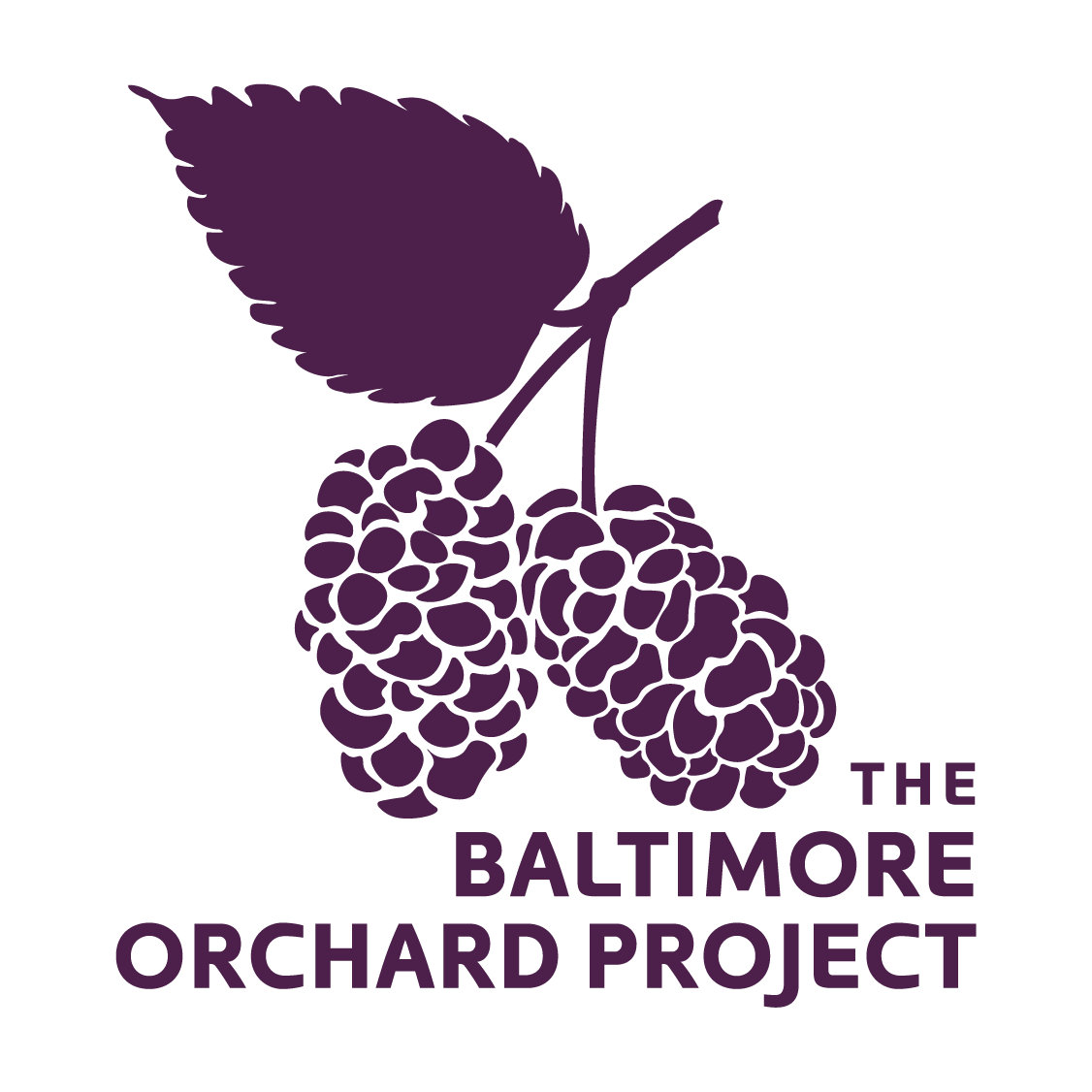BOP plants fruit trees to take part in Upton revival
On a bright autumn morning, Bryan Ibrafall Wright is strolling through a unique garden which has become a vital community resource and a potential national source for indigo, a dye which is used to color denim. This once was a vacant lot “filled with massive amounts of garbage and needles,” recalls Bryan, director of operations for the Natural Dye Initiative farm.
This one-acre garden, full of short indigo shrubs and winter vegetables, now features 70 dwarf fruit trees, donated by the Baltimore Orchard Project (BOP). It is part of a burgeoning national interest in indigo.
When BOP co-president Colin McDaniel got wind of the natural dye project at a tour in the spring, Bryan explained the initiative. He requested 100 dwarf fruit trees for the project, not thinking he would get all. They discussed how the community garden in West Baltimore’s Upton neighborhood could be a key for Upton’s revival and a center for growing natural indigo. The synthetic indigo, used to dye denim and other products, was revealed to be toxic. After more convincing talks, Colin arranged for 70 dwarf fruit trees to be delivered from Tree Baltimore to the site in April.
Bryan said he was “shocked” and gratified to get all the trees. The trees, planted in pairs, provide the indigo with needed partial shade. They also will furnish fresh fruit for Upton residents who are located in a food desert.
Pieces are falling into place for a natural indigo revival in Upton. The Harriet Beecher Stowe Elementary School which will be renovated into a processing plant, is located right across the street from the garden at 1223 Argyle Avenue. Truist Market President Jay Turakhia cited the project’s potential for job training employment for the community when he gave a 300,000 donation.
The Natural Dye Initiative, has already farmed out indigo seeds to five farms to add to production.
While they can’t now claim the organic label, since the soil has been contaminated with pesticides for the past two years, they avoid harmful pesticides. A proponent of no-till, the farm uses regenerative methods to add nutrition to the soil. They lay down ground cover, with layers of mulch that are enriching the soil.
For Bryan, growing up in Milan (pronounced with the accent on Mi) Tennessee, this is nothing new. Milan was the international capital of no-till, if only because the small farmers did not have the money or the e to invest in the big machinery of industrial agriculture.
“We had a no-til festival in the 1980’s,” Bryan says. No-till was recognized then “to feed the soil, stop the weeds” in the fields of soy and cotton. Now it’s “a worldwide trend,” notes Bryan.
Bryan, a leader who has worked in education and agriculture for years, finds this burgeoning business requires as much gardening skills as knowledge of entrepreneurship and sociology.
Nationally farms already are taking advantage of the market for natural dyes needed in jean manufacture. Indigo carmine, the synthetic used to color blue jeans as well as the many denim products in American wardrobes, is cited in numerous reports from the National Institutes for Health for causing hypertension, skin irritation and gastrointestinal disease.
A farm in Tennessee has staked out its claim for the natural indigo dye as other clothing makers from Tommy Hilfiger to Patagonia are searching for potential sources of the sacred blue. Gummy bears and other food makers also are in the market for a safe natural source for the favorite blue color in their products.
“We’re trying to position ourselves in this market,” Bryan says.
In his office, a white mobile unit at the end of the garden, Bryan reaches in a cardboard box to display a jar of the indigo powder that will be offered for sale. It awaits labels bearing the name Sacred Kolors, before going out in the online market via Amazon and Etsy. An 8-ounce jar of dried crush leaf indigo goes for $20. Blue-gold!
In addition to providing fresh vegetables and a center for the fledgling indigo business, the garden has become an oasis of calm for the West Baltimore community. “All the elders reroute their walks through here now,” says Bryan. “Police officers come up here during lunch. This is a green space, a place for calm” in the neighborhood.







